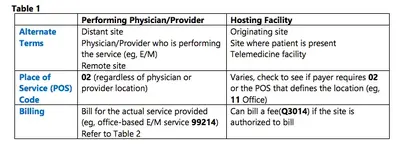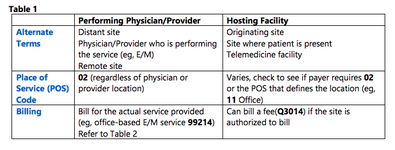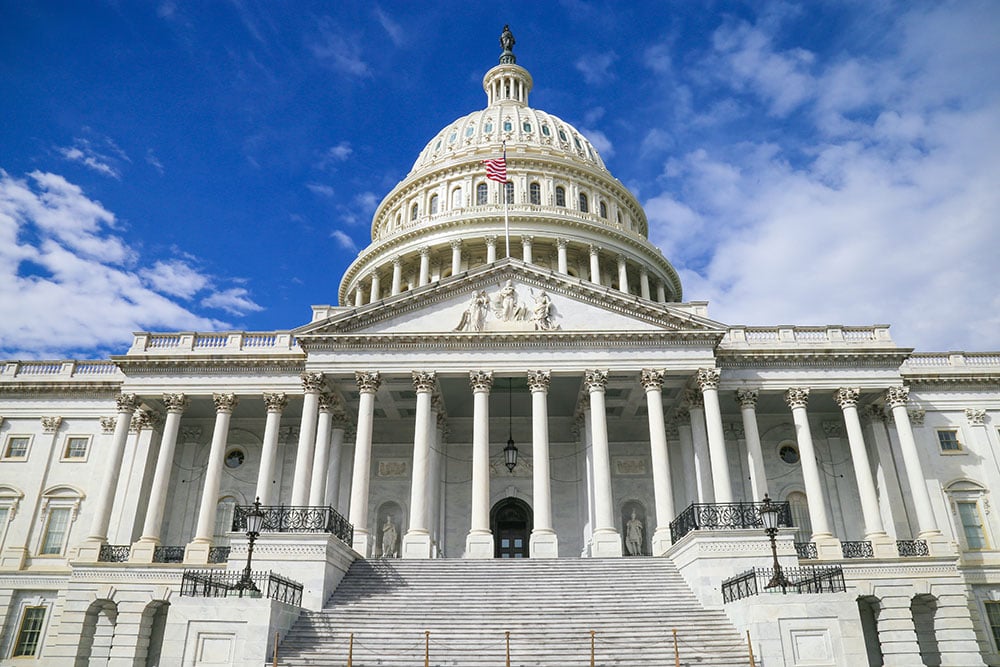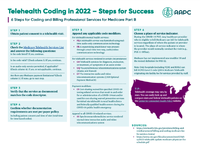2023 Telehealth changes
- Discontinuing reimbursement of telephone (audio-only) evaluation and management (E/M) services;
- Discontinuing the use of virtual direct supervision;
- Five new permanent telehealth codes for prolonged E/M services and chronic pain management;
- Postponing the effective date of the telemental health six-month rule until 151 days after the public health emergency (PHE) ends;
- Extending coverage of the temporary telehealth codes until 151 days after the PHE ends;
- Adding 54 codes to the Category 3 telehealth list and modifying their expiration to the later of the end of 2023 or 151 days after the PHE ends.
Discontinuing Reimbursement of Telephone (Audio-Only) E/M Services
CMS stated two-way interactive audio-video telecommunications technology will continue to be the Medicare requirement for telehealth services following the PHE. This is because Section 1834(m)(2)(A) of the Social Security Act requires telehealth services be analogous to in-person care by being capable of serving as a substitute for the face-to-face encounter. CMS stated, “we believe that the statute requires that telehealth services be so analogous to in-person care such that the telehealth service is essentially a substitute for a face-to-face encounter.” As audio-only telephone is inherently non-face-to-face.
Discontinuing the Use of Virtual Direct Supervision
This change was temporary because CMS was concerned widespread direct supervision through virtual presence may not be safe for some clinical situations.
Three New Telehealth Codes for Prolonged E/M Services and Chronic Pain Management
CMS itself proposed five new codes to be added to the Medicare Telehealth Services list on a permanent basis:
G0316 (Prolonged hospital inpatient or observation care evaluation and management service(s) beyond the total time for the primary service (when the primary service has been selected using time on the date of the primary service); each additional 15 minutes by the physician or qualified healthcare professional, with or without direct patient contact (list separately in addition to CPT codes 99223, 99233, and 99236 for hospital inpatient or observation care evaluation and management services).
(must be furnished in-person without the use of telecommunications technology.)
G0317 (Prolonged nursing facility evaluation and management service(s) beyond the total time for the primary service (when the primary service has been selected using time on the date of the primary service); each additional 15 minutes by the physician or qualified healthcare professional, with or without direct patient contact (list separately in addition to CPT codes 99306, 99310 for nursing facility evaluation and management services).
G0318 (Prolonged home or residence evaluation and management service(s) beyond the total time for the primary service (when the primary service has been selected using time on the date of the primary service); each additional 15 minutes by the physician or qualified healthcare professional, with or without direct patient contact (list separately in addition to CPT codes 99345, 99350 for home or residence evaluation and management services).
G3002 (Chronic pain management and treatment, monthly bundle including, diagnosis; assessment and monitoring; administration of a validated pain rating scale or tool; the development, implementation, revision, and/or maintenance of a person-centered care plan that includes strengths, goals, clinical needs, and desired outcomes; overall treatment management; facilitation and coordination of any necessary behavioral health treatment; medication management; pain and health literacy counseling; any necessary chronic pain related crisis care; and ongoing communication and care coordination between relevant practitioners furnishing e.g. physical therapy and occupational therapy, complementary and integrative approaches, and community-based care, as appropriate. Required initial face-to-face visit at least 30 minutes provided by a physician or other qualified health professional; first 30 minutes personally provided by physician or other qualified health care professional, per calendar month. (When using G3002, 30 minutes must be met or exceeded.))
G3003 (Each additional 15 minutes of chronic pain management and treatment by a physician or other qualified health care professional, per calendar month (List separately in addition to code for G3002). (When using G3003, 15 minutes must be met or exceeded.)).
Postponing the Effective Date of the Telemental Health Six-Month Rule Until 151 Days After PHE Ends
Medicare will cover a telehealth service delivered while the patient is located at home if the following conditions are met:
- The practitioner conducts an in-person exam of the patient within the six months before the initial telehealth service;
- The telehealth service is furnished for purposes of diagnosis, evaluation, or treatment of a mental health disorder (other than for treatment of a diagnosed substance use disorder (SUD) or co-occurring mental health disorder); and
- The practitioner conducts at least one in-person service every 12 months of each follow-up telehealth service.
Extending Coverage of the Temporary Telehealth Codes Until 151 Days After the PHE Ends
CMS stated this extension may simplify the post-PHE transition by applying the same coverage end date to all the various waiver-related telehealth codes in a hope to reduce billing errors. The complete list of temporary codes being extended for 182 days after the PHE ends can be found at this link-
https://www.foley.com/-/media/files/insights/publications/2022/11/table-14.pdf?la=en
Adding 54 Codes to the Category 3 Telehealth List
CMS’
Category 3 list contains services that likely have a clinical benefit when furnished via telehealth, but lack sufficient evidence to justify permanent coverage. CMS proposed adding 54 codes to that Category 3 list. The services fall into nine categories: (1) therapy; (2) electronic analysis of implanted neurostimulator pulse generator/transmitter; (3) adaptive behavior treatment and behavior identification assessment; (4) behavioral health; (5) ophthalmologic; (6) cognition; (7) ventilator management; (8) speech therapy; and (9) audiologic. The complete list can be found at
this link.
On November 1, 2022, the Centers for Medicare and Medicaid Services (CMS) released its final 2023 Medicare Physician Fee Schedule (PFS) rule.

www.foley.com



















